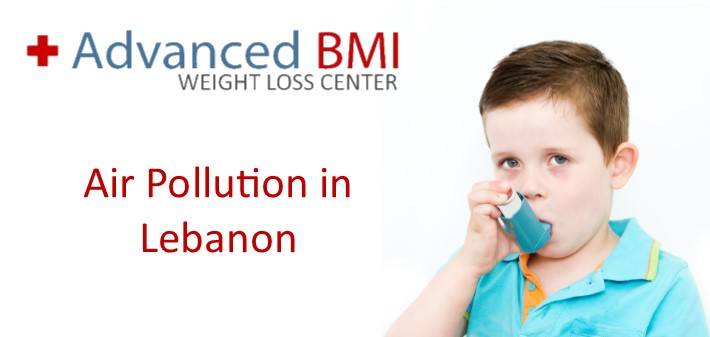Pollution in Lebanon became a major issue in the last decade. Years ago, they used to call Lebanon “the Switzerland of the Middle East“. Nowadays, with the staggering increase in the number of cars and the massive development of the construction that destroys the green spaces, Lebanon is one of the most polluted places in the world.
Air pollution in Lebanon is a major issue that concerns every citizen, with many of them largely affected in more than one way, not forgetting the clouded atmosphere and reduced air quality.
A number of health and climate agencies have as a result expressed fears over the increased health effects posed by the pollution, claiming that the warmer temperatures might heighten the risk for ozone as well as particle pollution, and in the future, make cleaning up the air really harder. Some of the most affected areas include the cities.
Beirut and suburbs worst affected
Studies by the American University of Beirut reveal that close to 93% of Beirut’s population is currently exposed to extreme levels of air pollution. Furthermore, the level of pollutants in the aforementioned areas, according to Biomedical Central, have hit the smog levels, clearly visible in the overlooking hills. Even though Beirut lacks industries with a significant impact on the environment, the rapid development of the real estate sector and increased car fleet have reportedly deteriorated air quality and worsened its effect on the health of citizens.
Nitrogen dioxide and other leading atmosphere pollutants in Lebanon
In 1973, when the National Council for Scientific Research (NCSR) set up a scheme to oversee constant observation of air contents that could otherwise be harmful, remarkable success in the fight against air pollution in Lebanon was observed. However, increased war by other sectors put to an end the said project and atmospheric pollution has continued to hit extreme levels since then.
Nitrogen dioxide, thermo-electric powerhouses, increased combustion resources, refineries, cement works and increased usage of cars constitute the major air pollutants in Lebanon today. The high sulphur content in fuel and CO2 emissions perhaps explain why traffic leads as the main source of air pollution in the country. The effects most of these pollutants have had on the people and the environment have also been damaging as well.
Severe Health Effects Linked to Air Pollution in Lebanon
According to the Daily Star, a popular Lebanon Newspaper, cancer is currently the most severe health condition Lebanese face due to increased air pollution, with higher figures being reported every other year.
Air pollutants such as carbon monoxide, sulphur dioxide, nitrogen oxides, soot and other fine particles have been shown to have a clear link to different types of cancer.
Furthermore, the pollutants’ concentration values obtained by several researchers in the country were well over the standards set by the World Health Organization, which explains the need for urgent measures.
The large amounts of nitrogen dioxide, for instance, account for many of the respiratory problems people face today. After it inflames the lining of your lungs, your immunity against lung infections takes a dip. This perhaps explains the rising cases of asthma, interstitial lung diseases and rhinosinusitis in the country over the past decade.
Meanwhile, researchers in the UK, US and Canada recently revealed a clear link between peptic ulcers, rheumatic heart diseases, pneumonia, coronary diseases and air pollution. This evidence should be of greater concern to the Lebanese government seeing as the country still faces extreme levels of air pollution.
Efforts by the Government to address air pollution
The Lebanese Government is the only organ directly responsible for seeing to it that there is decreasing levels of air pollution. Many experts insist that no new rules or regulations need to be introduced since the previous government already set in place a credible framework for handling this menace. Instead, what actually needs to be done is the successful implementation of those existing rules and regulations.
For instance, yearly assessments of vehicle safety exhaust emissions and road-worthiness matters must be firmly applied leaving behind no exceptions whatsoever. In addition, the release of toxic and virulent fumes must be controlled and the recycling projects made operational. Use of carpooling and buses has also been suggested before as a feasible measure to cut down car usage.
At the same time, the government also needs to put in place measures to reforest the country before it is too late. In the recent years, huge forested areas have experienced fires, which often lead to air pollution and environmental degradation.
In conclusion, air pollution in Lebanon counts among the most threatening disasters. It has already been linked to life-threatening effects and the bulky role of controlling this largely lies with the Lebanese government. If the earlier mentioned measures were put into use, then, that would bring the much needed change and results to the entire country.
References
http://www.natureasia.com/en/nmiddleeast/article/10.1038/nmiddleeast.2011.60
http://gobiidae.com/PN/pollutionprobinleb.htm
http://www.dailystar.com
http://almashriq.hiof.no/lebanon/300/360/363/363.7/impact.html#s2.2
http://www.sciencedirect.com/science/article/pii/S0045653513012745









